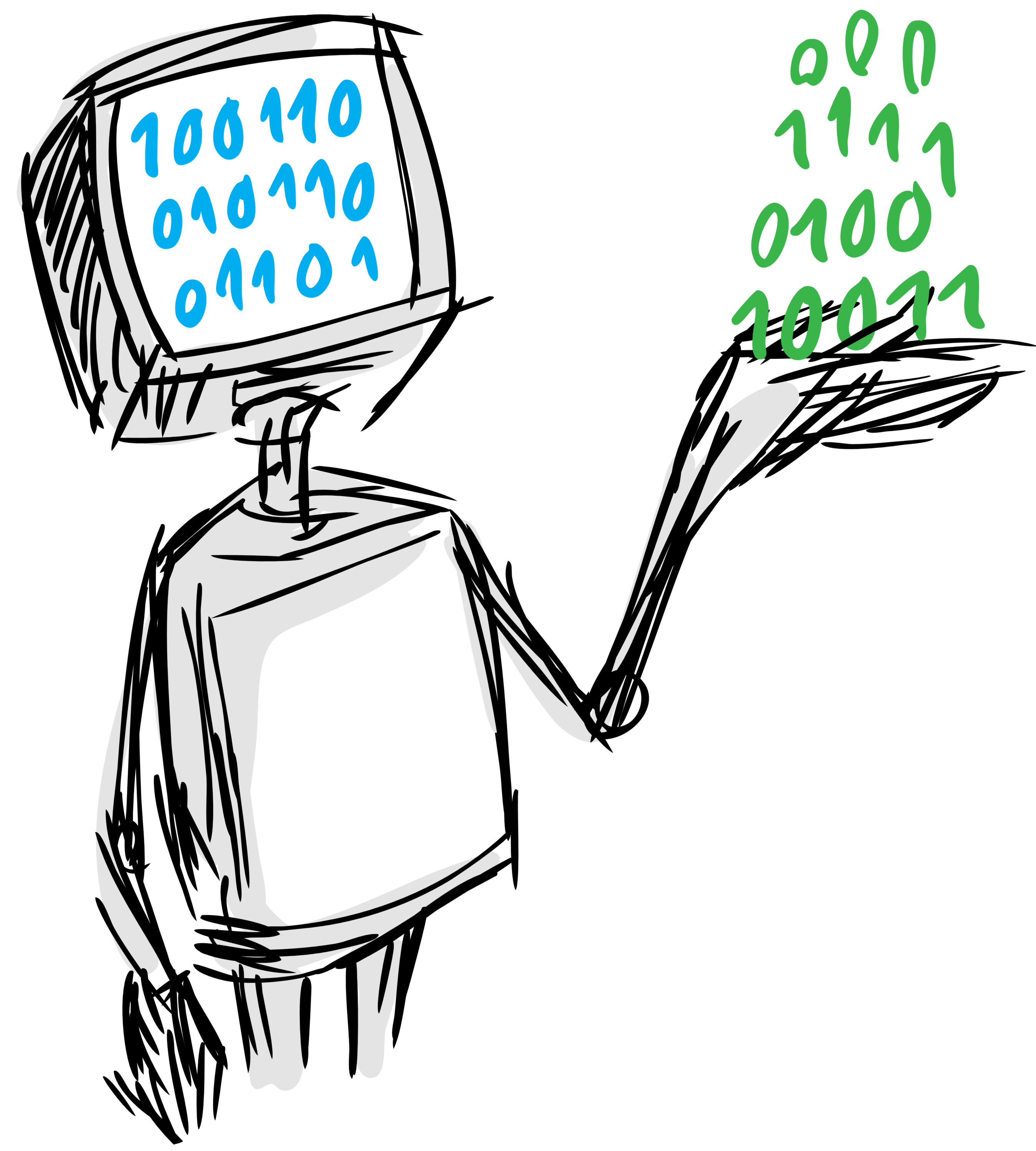
- Website: https://sdv.dev
- Documentation: https://sdv.dev/SDV
- Repository: https://github.com/sdv-dev/RDT
- License: MIT
- Development Status: Pre-Alpha
RDT is a Python library used to transform data for data science libraries and preserve the transformations in order to revert them as needed.
RDT is part of the SDV project and is automatically installed alongside it. For details about this process please visit the SDV Installation Guide
Optionally, RDT can also be installed as a standalone library using the following commands:
Using pip:
pip install rdtUsing conda:
conda install -c sdv-dev -c conda-forge rdtFor more installation options please visit the RDT installation Guide
In this short series of tutorials we will guide you through a series of steps that will help you getting started using RDT to transform columns, tables and datasets.
In this first guide, you will learn how to use RDT in its simplest form, transforming
a single column loaded as a pandas.DataFrame object.
You can load some demo data using the rdt.get_demo function, which will return some random
data for you to play with.
from rdt import get_demo
data = get_demo()This will return a pandas.DataFrame with 10 rows and 4 columns, one of each data type supported:
0_int 1_float 2_str 3_datetime
0 38.0 46.872441 b 2021-02-10 21:50:00
1 77.0 13.150228 NaN 2021-07-19 21:14:00
2 21.0 NaN b NaT
3 10.0 37.128869 c 2019-10-15 21:39:00
4 91.0 41.341214 a 2020-10-31 11:57:00
5 67.0 92.237335 a NaT
6 NaN 51.598682 NaN 2020-04-01 01:56:00
7 NaN 42.204396 c 2020-03-12 22:12:00
8 68.0 NaN c 2021-02-25 16:04:00
9 7.0 31.542918 a 2020-07-12 03:12:00
Notice how the data is random, so your output might look a bit different. Also notice how RDT introduced some null values randomly.
In this example we will use the datetime column, so let's load a DatetimeTransformer.
from rdt.transformers import DatetimeTransformer
transformer = DatetimeTransformer()Before being able to transform the data, we need the transformer to learn from it.
We will do this by calling its fit method passing the column that we want to transform.
transformer.fit(data['3_datetime'])Once the transformer is fitted, we can pass the data again to its transform method in order
to get the transformed version of the data.
transformed = transformer.transform(data['3_datetime'])The output will be a numpy.ndarray with two columns, one with the datetimes transformed
to integer timestamps, and another one indicating with 1s which values were null in the
original data.
array([[1.61299380e+18, 0.00000000e+00],
[1.62672924e+18, 0.00000000e+00],
[1.59919923e+18, 1.00000000e+00],
[1.57117554e+18, 0.00000000e+00],
[1.60414542e+18, 0.00000000e+00],
[1.59919923e+18, 1.00000000e+00],
[1.58570616e+18, 0.00000000e+00],
[1.58405112e+18, 0.00000000e+00],
[1.61426904e+18, 0.00000000e+00],
[1.59452352e+18, 0.00000000e+00]])
In order to revert the previous transformation, the transformed data can be passed to
the reverse_transform method of the transformer:
reversed_data = transformer.reverse_transform(transformed)The output will be a pandas.Series containing the reverted values, which should be exactly
like the original ones.
0 2021-02-10 21:50:00
1 2021-07-19 21:14:00
2 NaT
3 2019-10-15 21:39:00
4 2020-10-31 11:57:00
5 NaT
6 2020-04-01 01:56:00
7 2020-03-12 22:12:00
8 2021-02-25 16:04:00
9 2020-07-12 03:12:00
dtype: datetime64[ns]
Once we know how to transform a single column, we can try to go the next level and transform a table with multiple columns.
In order to manuipulate a complete table we will need to load a rdt.HyperTransformer.
from rdt import HyperTransformer
ht = HyperTransformer()Just like the transfomer, the HyperTransformer needs to be fitted before being able to transform data.
This is done by calling its fit method passing the data DataFrame.
ht.fit(data)Once the HyperTransformer is fitted, we can pass the data again to its transform method in order
to get the transformed version of the data.
transformed = ht.transform(data)The output, will now be another pandas.DataFrame with the numerical representation of our
data.
0_int 0_int#1 1_float 1_float#1 2_str 3_datetime 3_datetime#1
0 38.000 0.0 46.872441 0.0 0.70 1.612994e+18 0.0
1 77.000 0.0 13.150228 0.0 0.90 1.626729e+18 0.0
2 21.000 0.0 44.509511 1.0 0.70 1.599199e+18 1.0
3 10.000 0.0 37.128869 0.0 0.15 1.571176e+18 0.0
4 91.000 0.0 41.341214 0.0 0.45 1.604145e+18 0.0
5 67.000 0.0 92.237335 0.0 0.45 1.599199e+18 1.0
6 47.375 1.0 51.598682 0.0 0.90 1.585706e+18 0.0
7 47.375 1.0 42.204396 0.0 0.15 1.584051e+18 0.0
8 68.000 0.0 44.509511 1.0 0.15 1.614269e+18 0.0
9 7.000 0.0 31.542918 0.0 0.45 1.594524e+18 0.0
In order to revert the transformation and recover the original data from the transformed one,
we need to call reverse_transform method of the HyperTransformer instance passing it the
transformed data.
reversed_data = ht.reverse_transform(transformed)Which should output, again, a table that looks exactly like the original one.
0_int 1_float 2_str 3_datetime
0 38.0 46.872441 b 2021-02-10 21:50:00
1 77.0 13.150228 NaN 2021-07-19 21:14:00
2 21.0 NaN b NaT
3 10.0 37.128869 c 2019-10-15 21:39:00
4 91.0 41.341214 a 2020-10-31 11:57:00
5 67.0 92.237335 a NaT
6 NaN 51.598682 NaN 2020-04-01 01:56:00
7 NaN 42.204396 c 2020-03-12 22:12:00
8 68.0 NaN c 2021-02-25 16:04:00
9 7.0 31.542918 a 2020-07-12 03:12:00
This repository is part of The Synthetic Data Vault Project
- Website: https://sdv.dev
- Documentation: https://sdv.dev/SDV



